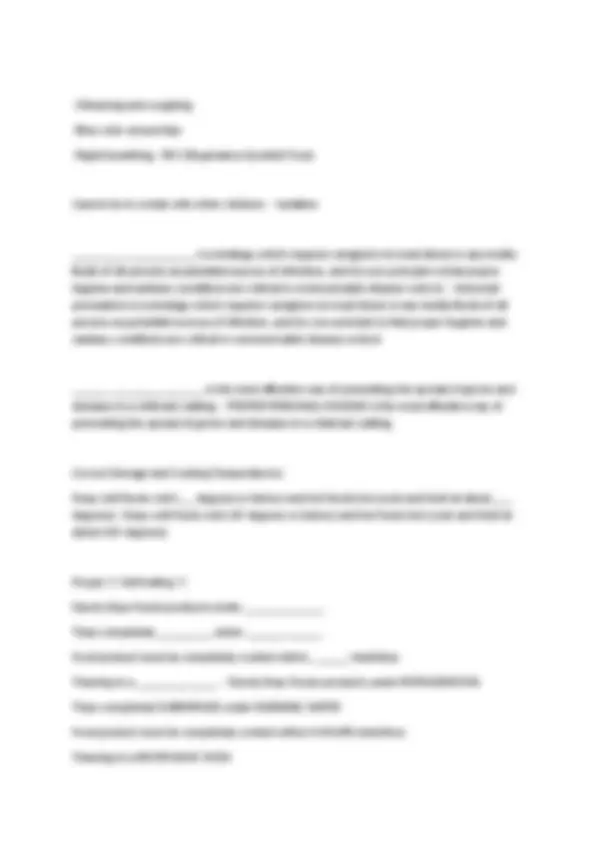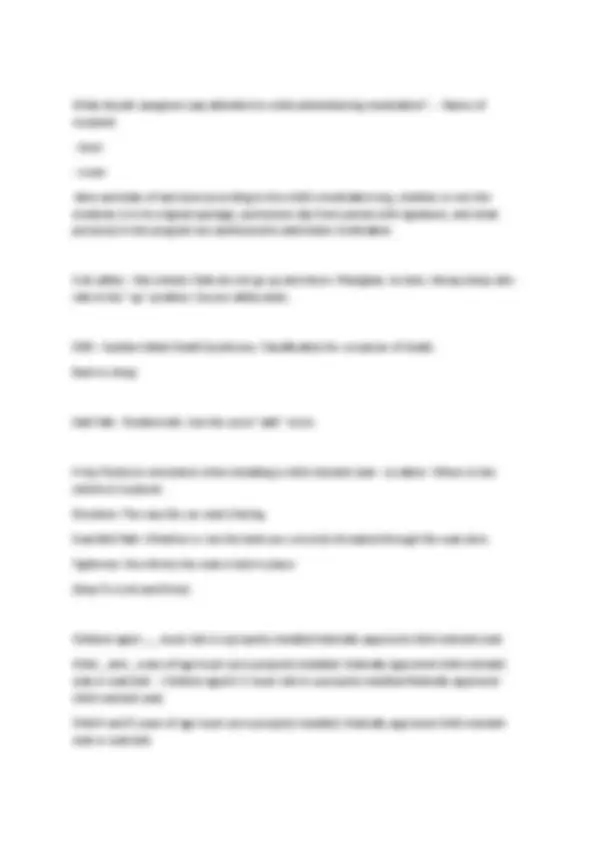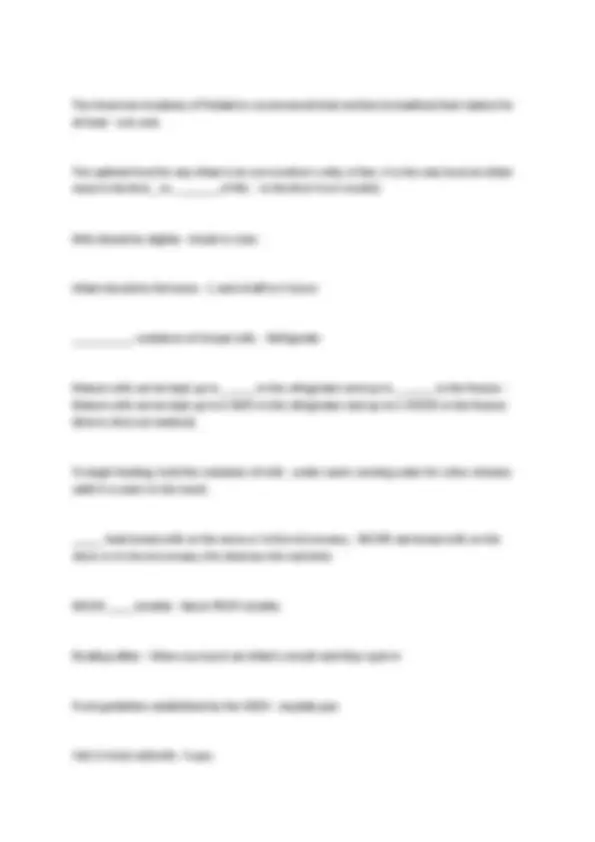





Study with the several resources on Docsity

Earn points by helping other students or get them with a premium plan


Prepare for your exams
Study with the several resources on Docsity

Earn points to download
Earn points by helping other students or get them with a premium plan
Community
Ask the community for help and clear up your study doubts
Discover the best universities in your country according to Docsity users
Free resources
Download our free guides on studying techniques, anxiety management strategies, and thesis advice from Docsity tutors
DCF CERTIFICATION TEST - HEALTH, SAFETY & NUTRITION The three A's of a healthy child are: - Appetite (eat a substantial amount of food, consume a variety of food, interested in eating, appears content after eating) & Appearance (clear bright eyes, clear skin, well-developed muscles, gains steadily in height and body weight) & Activity (has plenty of energy, is alert, sleeps soundly, few aches and pains) Good way of preventing, identifying, and controlling illness in a child care environment. - Daily Health Checks (includes behavior, face and body, other signs) _____ may be a warning sign that the body has an infection and needs treatment before the infection can become harmful. - Fever The best way to take a temperature is to use a _______ ___________ with a __________ _____. - The best way to take a temperature is to use a DIGITAL
Typology: Exams
1 / 6

This page cannot be seen from the preview
Don't miss anything!




The three A's of a healthy child are: - Appetite (eat a substantial amount of food, consume a variety of food, interested in eating, appears content after eating) & Appearance (clear bright eyes, clear skin, well-developed muscles, gains steadily in height and body weight) & Activity (has plenty of energy, is alert, sleeps soundly, few aches and pains) Good way of preventing, identifying, and controlling illness in a child care environment. - Daily Health Checks (includes behavior, face and body, other signs) _____ may be a warning sign that the body has an infection and needs treatment before the infection can become harmful. - Fever The best way to take a temperature is to use a _______ ___________ with a __________ _____. - The best way to take a temperature is to use a DIGITAL THERMOMETER with a DISPOSABLE SHEATH. Orally, ___ degrees or more is a fever. Under arm, ___ degrees or more is a fever. - Orally, 101 degrees or more is a fever. Under arm, 100 degrees or more is a fever. If dehydration is sever, the following will occur: - - eyes are sunken
Occurs when someone who is not used to very hot weather does not get enough liquid and salt. This condition is caused by excessive sweating. The person's skin becomes pale and clammy, and the person feels sick, dizzy, and/or faint. Pulse rate and breathing become rapid, and a headache or muscle cramps may develop. 1) Lay the person down in a cool, quiet place, with feet raised a little. 2) Loosen any tight clothing and supply water to drink. 3) Add 1 teaspoon of salt to each quart of water. - Heat Exhaustion Caused by prolonged exposure to very hot conditions, not enough fluids and/or salt, body stops regulating temperature. The person's skin becomes flushed, hot and dry, elevated temperature (104F skin hot to the touch), strong and rapid pulse, confusion or loss of consciousness. Immediate medical attention required- call 911. - Heat Stroke Four types of germs: - - Bacteria (seen with ordinary microscope; causes strep throat, impetigo, pinkeye, and some pneumonia; antibiotics help stop growth)
What should caregivers pay attention to while administering medication? - - Name of recipient
The American Academy of Pediatrics recommends that mothers breastfeed their babies for at least - one year. The optimal food for any infant is its own mother's milk; in fact, it is the only food an infant need in the first _ to _ ______ of life. - in the first 4 to 6 months Milk should be slightly - bluish in color. Infant should be fed every - 1 and a half to 3 hours __________ containers of breast milk. - Refrigerate Mature milk can be kept up to _ ____ in the refrigerator and up to _ _____ in the freezer. - Mature milk can be kept up to 8 DAYS in the refrigerator and up to 2 WEEKS in the freezer. (first in, first out method) To begin feeding, hold the container of milk - under warm running water for a few minutes until it is warm to the touch. _____ heat breast milk on the stove or in the microwave; - NEVER eat breast milk on the stove or in the microwave; this destroys the nutrients. NEVER ____ a bottle - Never PROP a bottle. Rooting reflex - When you touch an infant's mouth and they open it Food guidelines established by the USDA - myplate.gov THE 5 FOOD GROUPS - Fruits